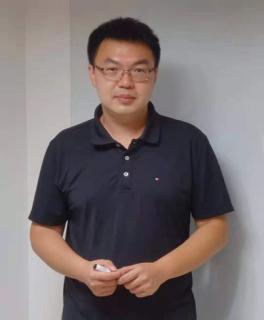

Jingyin Huang is an assistant professor and the Alice Louise Ridenour Wood Chair in Mathematics at Ohio State. Huang is an expert in geometric group theory, which studies the deep connections between the algebraic properties of groups and the geometry of spaces they act on. He completed his PhD at New York University in 2015 under the direction of Bruce Kleiner and subsequently held postdoctoral positions at McGill University (2015-2017), the Max Planck Institute for Mathematics in Bonn, Germany (2017-2018), and finally as Zassenhaus Assistant Professor at Ohio State (2018-2020). In the autumn of 2020, Huang began his current tenure-track position at Ohio State. Huang has lectured widely and frequently at conferences and in departmental seminars across the United States and the world. In May 2019, he was the Junior Simons Professor for the Simons Semester Geometric and Analytic Group Theory at the Institute of Mathematics at the Polish Academy of Sciences.
Huang's interest in geometric group theory was initially sparked by attending a lecture series on Mostow's rigidity theorems on lattices in semisimple Lie groups. One consequence of these theorems — that the isometry type of a complete finite-volume hyperbolic manifold with dimension of at least three is completely determined by its fundamental group — continues to fascinate him and inspire his research. Mostow's rigidity theorems have inspired many generalizations and variations: One alternative and fundamental notion of rigidity is quasi-isometric rigidity, which (roughly speaking) asserts that the algebraic structure of a discrete group is largely determined by its asymptotic geometry. Conjecturally “most” finitely generated groups should be quasi-isometrically rigid. However, this is only known for a few classes of groups. A large part of Huang's research is motivated by finding general patterns that will establish the quasi-isometric rigidity (or related forms of rigidity) of large classes of discrete groups.
